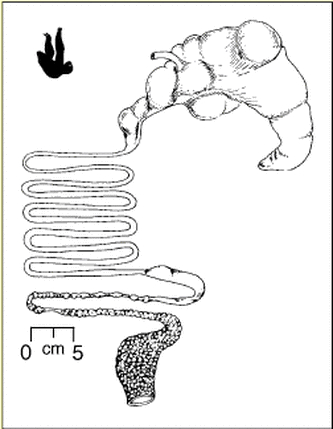 |
|---|
NATURAL SELECTION AND EVOLUTION OF ANIMAL
ROLE OF NATURAL SELECTION
A) Many of the pygmy three-toed sloth's adaptations arose becasue of natural selection in rainforests. They have more than one specif adaptation that makes them perfect for living in treeetops in the tropical regions such as islands. One of the main adaptations that has occured is the length of the pygmy sloth's arms, due to natural selection of trees and mangroves this adaptation has evolved over time to the specific types of trees in the pygmy sloth's habitat. Another adaptaion that has aropse from the natural selection of many types of plants and other organisms in many rainforests is the sloth's fur. Over time it has become very dense and home to many pesticids, although this is a mutual relationship, also algea has also found a home in many of the pygmy sloth's fur. Claws of the pygmy three-toed sloth is also a very wide know adaptaion of their species, this adaptation has occured also by the natural selection of trees in the reainforests. All of these adaptaions were maintaied through the population due to the specific habitat in which many pygmy sloths live. Due to all sloths living in treetops and mangroves these adaptations have been passed down through multipul generations.
B)There have been many evolutionary changes in pygmy three-toed sloth's over their entire existance. Due to enviornmental chnages has caused some of these adaptaions, specifically four. The first of these evolutionary changes being the length of the pygmy sloth's arms, as well as their claws. The pygmy sloth is very relient on these two main changes throughout time, because they live in treetops these changes are very important to them. Another change is the fur of the pygmy sloth, it has adapted to its enviornment and the changes that have come with it as well as housed other organisms such as paracites and algea. One last evolutionary changes that has been casued directly from enviornmental change is their digestive system. The pygmy sloth's complex digestive system has come about due to the predetors and long weeks spent up in the treetops. Many different changes have occured overtime concinerning the pygmy sloth and the enviornment can have a huge impact on those changes.
C)

In this particular selectrion grpah, the certian type of selection depicted is directional. Directional selection is when a certian extreme is favored over other phenotypes. In this case with the pygmy three-toed sloth, the common phynotypes are the extremes, they are the most favored charateristics according to many pygmy sloths. This illustration promotes directional selction in phenotype and can be used to identify much of the population of pgymy sloths.
TIMELINE

YEAR- PRESENT
YEAR- 1950S
YEAR- 1900S
YEAR- 1800S
YEAR- 1700S
YEAR- 1600S
FOUR PART SUMMARY
The pygmy three-toed sloth has come a long way throughout evolution inculding its adaptaions due to natural selcetion as well as enviornmental changes. As you can see above in the evoultionary tree, when the Bradypus species oringinated, there were many more species that branched off of this specific type of three-toed sloth. There was a specific bottleneck event that took place soon after the Bradypus population came about in many rainforests, this event was casued by the deforestation of trees in many of these regions. This speciation event was most likely casued by the demand for trees in many different industrial areas, as well as making room for more industrial buildings and companies. The deforestation could have also been casued by an earthquake or flood that could have caused trees to fall. The main difference between the two subspecies its the amount of toes that each species contanis. There is the subspecies of Megalonychidae which are two toed sloths and the Pygmy Bradypus, or the pygmy three-toed sloth, my specific animal. The adaptaions of the three-toed sloth are still presetnt today however are more arre to find and indangered rather than the two toed sloths. Some of the basic adaptaions of the three-toed sloths are long arms, claws, fur and the ability to swim. These adaptaions were favored by natural selection of trees as well as the enviornment, they are currently indangered because of their predators and the risk of more bottleneck events happeneing in many of the areas in which they live. The other subspecies, two toed sloths have mainly the same adaptaions the only difference is the fact that they only possess two toes instead of three, which means two claws. Nature has also favored this subspecies of sloths by the trees and mangroves in which they live and the type of weather they have in many rainforests. This organim is most likely succssesful today because of the population number and where the two toed sloth can be found.
THREE-TOED SLOTH ADAPTAIONS

TWO-TOED SLOTH ADAPTAIONS

